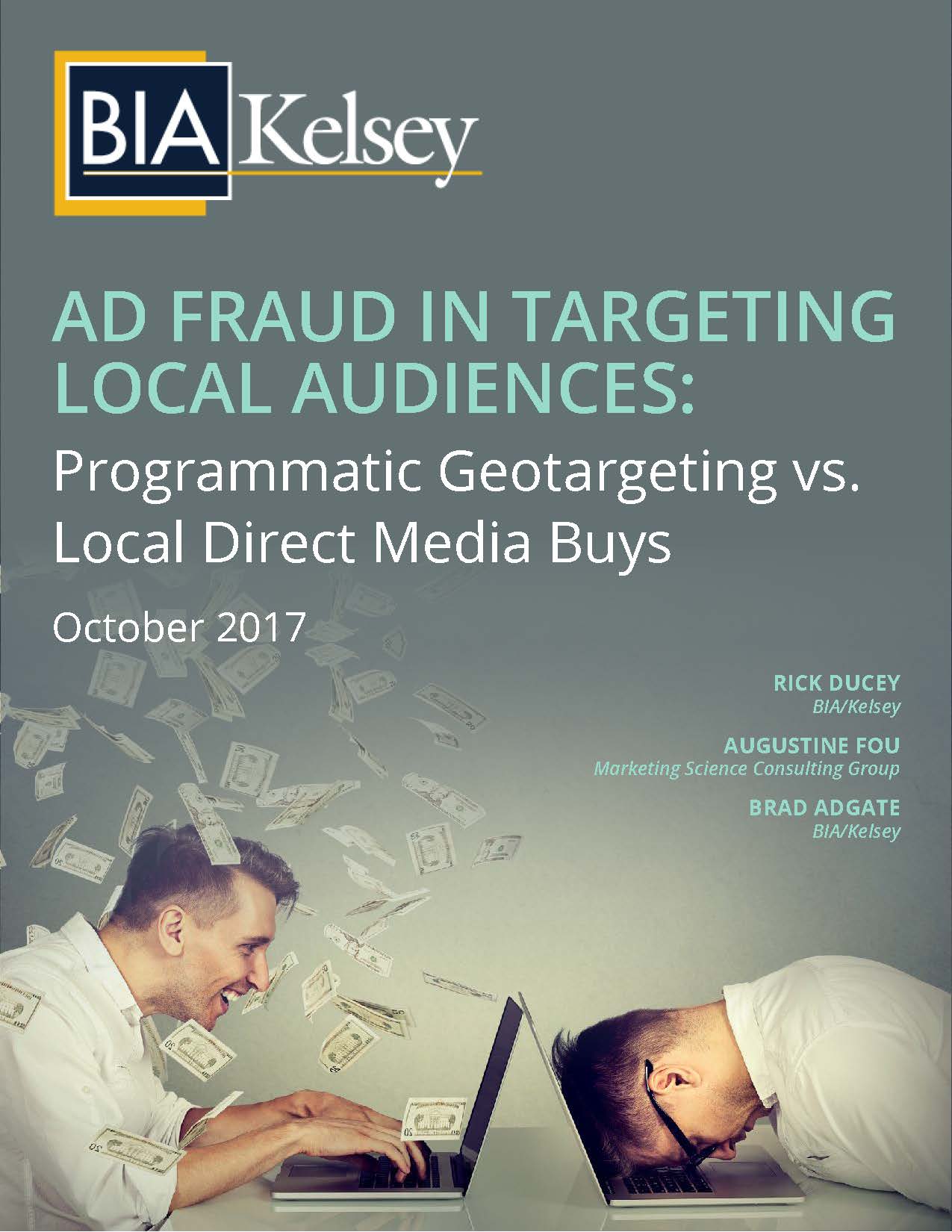Ad fraud is siphoning revenue away from legitimate publishers and delivering the wrong audiences to advertisers. Both publishers and marketers targeting local audiences should not only be aware of the risks of ad fraud but also take proactive action to contain this growing threat. BIA/Kelsey, in collaboration with Marketing Science Consulting Group, conducted a preliminary study to assess the risk of fraud targeting local audiences in programmatic media. What we observed based on a series of purchasing and evaluating live programmatic ad campaigns is that the average rate of fraud across 16 DMAs was about 6%.
The problem likely will get bigger as ad spend continues to shift into digital, and more specifically into targeting local audiences. Fraudsters “go where the money is” and their focus is going after the easier money. Using the 6% average rate of fraud, we extrapolated to all DMAs with measured local ad spend to get a sense of the full impact. BIA/Kelsey forecasts that ad spending target local audiences will reach nearly $76 billion across all media by 2021 including linear and more fraud-prone digital platforms. This makes an attractive and lucrative target for cyber criminals. BIA/Kelsey estimates that on an annual basis perhaps $3 billion is at risk of geotargeting ad fraud. This estimate is based on using current estimates of the amount of local ad spend that is currently spent in digital and online media.
With respect to ad fraud, there are different levels of risk for marketers when using geotargeted programmatic media compared to direct media buys from local media outlets.
- Geotargeting in programmatic media means targeting users based on approximations of their geolocation at any given time. This is done most often by estimating their location using the IP address rather than using real GPS location data. Because of this, the location is an extremely coarse, at best.
- Buying media direct from local media outlets means putting ads on the websites of local radio, newspapers, and magazines. The audiences of these local media websites are typically the residents of the city, region, or DMA (Designated Market Area). This form of “targeting” does not rely on geolocations approximated from IP addresses.
The primary reason for the risk of fraud in geotargeted programmatic media buys is that fraudsters can make their bots appear to be coming from any geolocation through a variety of techniques including passing fake geodata or using proxy IP addresses that appear to be in certain geolocations. In this way, the advertisers using geotargeting in programmatic may be tricked into paying for ads shown to users that are not humans and that are pretending to be in the geographies targeted. The fraudsters’ bots can also simulate pageviews, clicks, downloads, and other parameters typically used to assess audience engagement, thereby giving encouraging but false reports of campaign success. The bad news is that current anti-fraud methodologies, while helpful, do not solve the full problem.
Preliminary recommendations from BIA/Kelsey include:
- Programmatic Geotargeting vs. Local Direct Media: Buying geotargeting media through ad exchanges may not exhibit the same quality as buying direct from local media publishers.
- Ad Fraud Variance Across DMAs is not meaningful or actionable: While there was observed to be differences in the rate of fraud across the DMAs studied, the variations are not meaningful or actionable. For example, higher fraud in San Francisco or Dallas does not mean a marketer should spend less in those DMAs.
- Geotargeted Ad Fraud is a Scaled Problem: Ad fraud in geotargeting campaigns can come from fake mobile devices which create fake geolocation data, in order to match the targeting of the campaigns, enabling them to steal ad dollars from local media ad spend.
Download the full report here.

